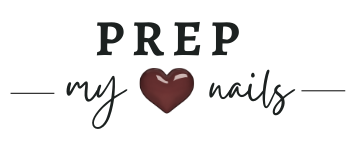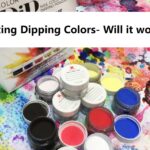
Whether you’re perfecting a manicure for yourself or a customer, the most important thing is that it lasts a long time. After all, what sense is it to spend hours creating if it’s all for naught? Acrylic monomers can assist you with this. They provide your fake nails a smooth and glossy look, prevent your nail paint from flaking, and keep them in place on your nail bed. Some of these monomers can help protect your nails from yellowing by blocking UV radiation. A monomer is a molecule that may create bonds with other molecules to form a polymer, which is a larger molecule. There are multiple kinds of monomers, but acrylic monomers are the most prevalent.
What Is Monomer For Nails Made Of?
Monomers in liquid form and polymers in powder form are frequently used in acrylic systems to make enhancement material. The term ‘Liquid’ refers to a monomer. A monomer is a molecule that forms a polymer when it binds to other molecules. Nail liquid is a monomer mainly composed of ethyl methacrylate (EMA) but may also contain other monomers and additives. The UV Inhibitors in the monomer give it a purple tint, which helps keep the acrylic from yellowing and stops the monomers from curing on their own.
What Is Polymer Powder?
Polymer is a synthetic material consisting of giant molecules bonded together by a succession of simple monomers. Powder polymer composition varies a lot from one firm to the next. It can include polymers and initiators and pigments and silica to keep the acrylic formula running. Polymerization occurs when the powder polymer touches the acrylic monomer and begins to cure or dry, regardless of the formula. Poly Ethyl Methyl Methacrylate is a powdered polymer commonly used in acrylics (PMMA). PMMA is a tough, rigid material that one can improve by blending with softer polymers. A technician can make high-quality, long-lasting improvements with the correct acrylic powder composition.
How To Use The Monomer Liquid For Nails?
The following processes are involved in using the monomer liquid for nails:
Cleansing
The first step is to prep the natural nail before shaping the replacement nail. The surface of the nail is carefully cleaned with a nail bed cleaner. Solvents like isopropyl alcohol, which remove oils and grime off the nail’s surface, are commonly used as cleaners. They will also clear the region of microorganisms to help lower the risk of illness. When using these solvents, exercise caution since they might dry out the skin around the cuticle. It happens because the solvents also destroy the skin’s natural moisturizing oils.
Priming
Following the cleansing of the nail bed, apply a primer to ensure that the acrylic adheres correctly. There are two sorts of primers: non-etching and etching. The non-etching kind works similarly to double-sided tape, with one side of the primer adhering well to the original nail and the other end adhering equally well to the acrylic polymers used in the artificial nail. Etching primers include acids that dissolve a small layer of the nail. The etching technique improves the acrylic’s adhesion to the nail.
Mixing The Powder And Monomer
When the monomer and powder are combined, a resin is formed. Once the liquid and powder have mixed, the fingernail technician must work swiftly with the resin. If you don’t, the resin will set before you can form it into a nail, rendering it useless.
Sculpting
A nail-shaped form is put over each fingertip before the resin is applied to keep the resin in place and ensure it gets the precise size and shape. After that, the professional applies the resin to the fingers. Before the resin cures, the professional molds it to seem as natural as possible. After that, the technician removes the form.
Finishing
The new nail is filed and groomed to form when the acrylic has dried. Coatings and polishes are next applied to finish the manicure.
More liquid plastic treatment is required for the acrylic nail to retain a consistent shape as the natural nail grows.
Popular Brands Of Monomer For Nails
Top-rated and recognized companies in the nail care business include Mia Secret, Young Nails, Caee, and KiaraSky. The greatest monomer brands and their goods are listed below for you to pick from:
Liquid Monomer by Mia Secret
In the nail care sector, Mia Secret is a trendy brand. Mia Secret sells various nail care items, such as complete acrylic nail kits and supplies. Many nail techs and DIYers alike prefer Mia Secret Acrylic Liquid Monomer because it is simple to apply, lift resistant, inexpensive, and MMA free. Some nail technicians report that they don’t even need to use a nail drill tool after using this acrylic liquid.
Acrylic Nail Monomer by Caee
Caee is another well-known and popular nail care brand that offers various nail care products, including liquid monomers. Many nail technicians choose Caee Acrylic Nail Monomer. It’s a high-quality product that does not peel, break, or harm skin or fingernails. Other acrylic powders also work well with Caee Acrylic Liquid Monomer.
Acrylic Nail Monomer by Young Nails
Young Nails has all the nail liquid you’ll need to produce stunning acrylic nails. The acrylic powders give a smooth consistency without bubbling, lifting, or yellowing for excellent adhesion, accurate color mixing, an easy-to-level application, and are available in a wide range of colors, in addition to delivering high-quality acrylic liquids and acrylic powders. Young Nails offers a comprehensive variety of materials, including popular acrylic powders and monomers.
EMA Professional Liquid by KiaraSky
It is the best solution for you if you run or operate a salon and go through a lot of acrylic liquid. The KiaraSky EMA liquid is a professional-grade acrylic liquid that makes it simple to provide your customers with beautiful, long-lasting acrylic nails. The KiaraSky EMA liquid is also MMA-free, making it a safe, dependable, and high-quality product for salon technicians.
What Can Be Used Instead Of Acrylic Monomer?
Unfortunately, there are no perfect monomer liquid replacements. The monomer was created exclusively for the application of acrylic nails. However, you can use polyester resin because its chemical makeup is comparable but not identical, and most individuals don’t have it on hand. Furthermore, the polyester resin will dry somewhat greenish, perhaps ruining your perfectly matching manicure color. In a pinch, rubbing alcohol could work, but the granules will not adhere, will be lumpy, the color will wipe off, and the acrylic will be exceedingly weak. Using this procedure, you may anticipate your acrylic flake to fall off within a day. Nail glue contains remarkably similar components to those found in the “base” liquid for dip nail powder systems. While it is far too thin and watery to function correctly, you can use it, and the acrylic powder should adhere if you have some on hand.
Conclusion
When looking for a liquid monomer, search for solutions that contain EMA rather than MMA, as the latter is harsh and inflexible and can harm your nail beds. Remember that MMA-free choices tend to have a strong odor, so applying the lotion with a window open or air flowing is best. You’ll also want a UV-blocking product to keep your nails from bleaching. If you’re a newbie to acrylic nail art, use a method that takes time to dry so you can correct any errors before the liquid solidifies.
More Articles On Nails Care:
- How To Use A Builder Gel On Natural Nails?
- How Much Is A Pedicure? – Complete Price Breakdown
- 8 Types Of Nail Extensions You Should Know About
- Best Nail Extensions For Short Bitten Nails
- How To Tell The Nail Tech What You Want?
- Does Kerasal Work?- Kerasal Nail Treatment Review
- Can You Use Any Nail Polish For Stamping?
- Can I Paint My Nails With Stamping Polish?
- What Kind Of Manicure Lasts The Longest?
- Can You Get Gel Nails Done On Short/Bitten Nails?
- How to Shape Coffin Nails in a Hurry?








